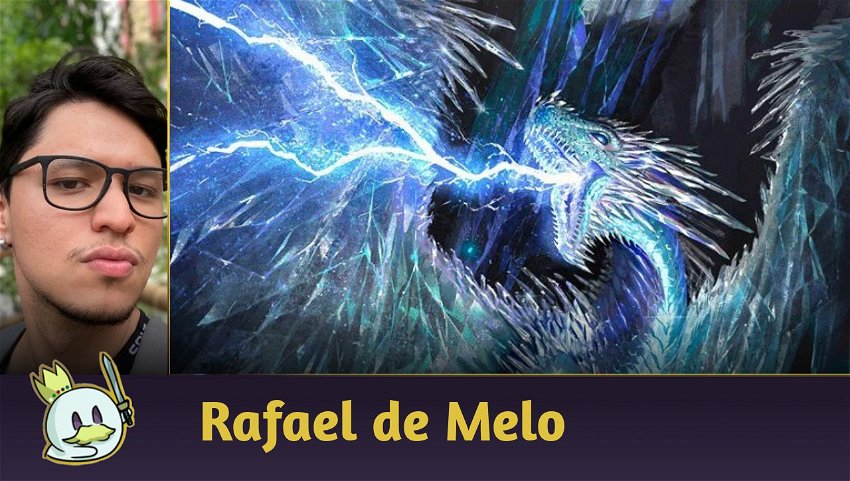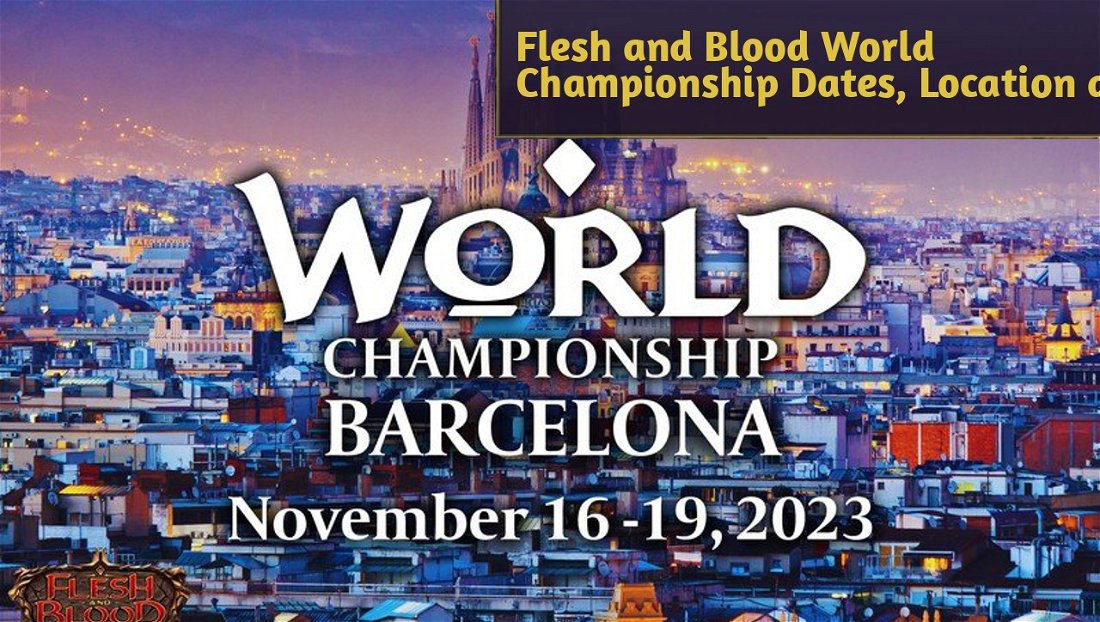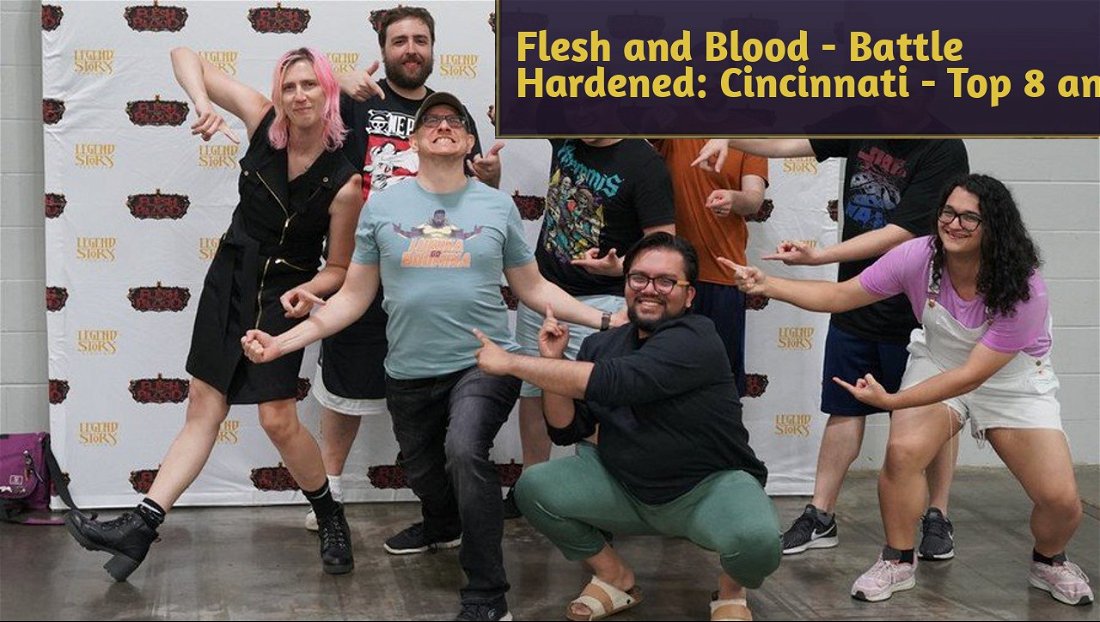Introduction
During the past few months there have been major competitive events, and Lexi, Livewire's dominance was clear. However, with this rise, a deck rises along with the ranger to face her and still have reasonable matches against the rest of the format. Today we are going to talk about this heroine who is constantly growing and is one of the most beloved by players: Dromai, Ash Artist.
I won't get hung up on how Dromai, Ash Artist works and her mechanics. If you don't know them, I recommend that you read the her Blitz deck tech, whose introduction and heroine mechanics are more complete!!
Dromai's Possibilities

Before we go to the list, I would like to quickly go through the lists that Dromai, Ash Artist can use and show the possibilities that the heroine has in Classic Constructed.
Dromai Big Dragons (or Control)

This strategy consists of a strategy of playing backwards using several defensive cards, building a board with large dragons (usually these being Tomeltai and Dominia) and trying to win the game with them and illusionist attacks such as Embermaw Cenipai (3) and Enigma Chimera (3).
In addition to these cards, some decks run Mage Master Boots to grant go again to Action cards like Tome of Fyendal or Passing Mirage to create an advantage.
Because it's a slower strategy, it doesn't put pressure in the early game, but it can take the lead with the big dragons with overwhelming effects and doesn't disappoint in the late-game, since there will be several red cards for the second cycle.
Dromai Redline

Just as the name suggests, Dromai Redline is a game line where all cards in the main deck are red. That is, the deck does not run blue or yellow cards - making it hyper aggressive and taking the best possible advantage of the heroine's ability. Still in this category, one deck stands out and that's what we'll talk about in the article: Empress Dromai.
It is possible to identify this strategy easily; in addition to the absence of other colors, there are more aggressive and very low-cost cards like Snatch (1), Enlightened Strike and, in some lists, Red Hot.
Dromai Hybrid

And finally, the hybrid version seeks a middle ground between the two versions above. She can't be the most aggressive or the most defensive, but she tries to get the best of both worlds and adapt to the opponent she'll be facing.
The list seeks to merge Defense Reactions, but without giving up the aggressiveness and even making some bigger dragons - a goal that Redline cannot do.
The Decklist
This is the list I use, and you will find similar versions at tournaments. It was based on the one built byMara Faris, who was the creator of the variant we call Empress Dromai.
Vocabulary
Before proceeding, I will use some terms to define the advantages and disadvantages of certain cards. Therefore, it is important to know these terms well to understand the list in its entirety.
- Chain starter: Cards that enable Dromai, Ash Artist's second ability, and allow you to continue your turn. All Invoke cards fall into this category, and any card that has the ability to Go again also falls into this category;
- Chain ender: Attacks that end the combat chain and, consequently, indicate the end of your turn. These are usually non-go again but threatening attacks like Command and Conquer or Snatch (1);
- Poppers: non-illusion attacks with power six or greater capable of destroying attacks withPhantasm, including dragons.
Empress Dromai
Empress Dromai is a version based on the Redline, but its aggressive vision gives up some cards like Sink Below (1) and Fate Foreseen (1) to use the most efficient red cards among power and cost.
Originally, the deck had Crown of Dominion (without Cash In) to be able to generate Ash from the first turn, removing the need for a non-dragon card in the starting hand or the interaction of Sigil of Solace (1) with Flamescale Furnace. However, the new common equipment from Outsiders Seeker's Mitts plays the same role, but also on the opponent's turn, thus guaranteeing at least one Ash since our first turn.
A Phoenix among Dragons

One of the “weirdest” cards for those unfamiliar with the deck is seeing a single copy of Phoenix Flame. The attack is much more played in Fai, Rising Rebellion both for its ability and for the ease of attacking with one or more power, but here we have no way to return it to the hand or grow its power, and still, the list has three Flamecall Awakening to tutor it. What makes it so important?
In this list, Phoenix Flame has the only and simple function of generating resources, and we only use it to attack if the damage is lethal. But why, specifically, her and not any other red card?
In the not so distant past, several aggressive lists (mainly Fai, Rising Rebellion) used Belittle (1) to tutor Minnowism (3). The idea of these lists was to have an aggressive attack that tutored the necessary resource for the turn, correcting an entire red hand. The interaction ended in Belittle (1) being banned from the format. But what if we did something similar?
The idea of Flamecall Awakening with Phoenix Flame is to mimic the interaction of Belittle (1) as follows:
- Play a red card as Chain starter;
- Attack with Flamecall Awakening to tutor Phoenix Flame;
- Use Phoenix Flame to activate Flamescale Furnace and generate two resources (since there is already a red card in the pitch zone used to pay Flamecall Awakening).
It is thanks to this interaction that it is possible to end turns with two-cost cards without giving up the other cards in our hand. And even though there are no two-cost cards in our hand, Phoenix Flame gives us an Ash “for free”.
Small dragons, Big chains
Another notable difference in this list is the absence of dragons costing three or more, and the reason is easy to understand: as we only use red cards, it is very difficult (if not impossible) to pay for these dragons, while dragons costing zero to two are perfectly usable.
As we want to be aggressive, all zero and one cost dragons are mandatory here and help to establish a big board for cheap, and all have important functions for our strategy.

Cromai and Azvolai are zero-cost dragons that, in addition to starting the combat chain without having to pay, have excellent skills.
Cromai gives us an action point, making it possible to continue the turn even if a dragon is destroyed, while Azvolai is a kind of Rosetta Thorn that can both punish the opponent who doesn't use arcane barrier and cleanly destroy Aether Ashwing on a mirror.

At cost one we have three dragons: Kyloria, Yendurai and Miragai.
Kyloria is a threat against decks that use items, mainly Dash, Inventor Extraordinaire, and can steal the Gold token against decks that seek to abuse Cash In, but in several games the dragon is a Snatch (1) that can make immediate use of the drawn card.
Yendurai is a large dragon with a low cost and difficult for the opponent to kill. Thanks to his Endurance counter, the opponent needs to either deal six damage directly, or first take the counter off and then deal three damage to the dragon.
Miragai is one of the most important dragons on the list because it takes away Phantasm from the first dragon who attacks. Its interaction with Cromai allows us to gain two action points (one from the effect of Go again and another from the dragon's ability). This interaction is essential against decks that have plenty of big attacks like Bravo, Showstopper.

We still use two cost two dragons: Themai and Ouvia.
Despite Themai's ability not being as relevant in some games, it is a dragon with a good body and power - which justifies its use, while Ouvia can generate Aether Ashwing and create a snowball as the game goes on, where there will be a point where the opponent will be unable to deal with so many dragons.
Illusionist and Generic attacks
However, it is not just dragons that this list is used for. Several other attacks are present to help with the aggressive plan and also help to give Dragons Go again.

Billowing Mirage (1) allows the generation of an Aether Ashwing, helping to create a board, but since this generation is optional, we can only keep one Ash for emergency cases. Another attack that helps generate Ash is Dustup (1). In addition to being an excellent chain ender with a break point (being extremely annoying to block four power with a single card), its on-hit effect can help create Ash as well as Aether Ashwing.
Embermaw Cenipai (1) may seem quite risky to stay on the list because it is “heavy” and has the Phantasm ability, but against opponents that rarely use Poppers this attack is an extremely efficient threat, in addition to blocking three if necessary.

Along with illusionist attacks, draconic cards come in here to help with aggression. In addition to the already mentioned Flamecall Awakening, Blaze Headlong may not be a Chain starter due to its conditional go again, but it comes in here as an excellent aggressive option for the deck.
In generic attacks, we will use staples from aggressive decks. Scar for a Scar (1) has a simple conditional go again. Ravenous Rabble (1) will always have four power since we only have red cards, making it one of the best cards in the deck, as well as an excellent Chain starter.
Snatch (1) is another staple of this type of deck, where its on-hit can guarantee us an arsenal.
Enlightened Strike is debatable for not generating Ash, but its flexibility is such that it justifies its use. It can be a Chain starter, a Chain ender who grants an arsenal, or a seven-power threat, in addition to blocking three. Along with it, Command and Conquer guarantees its space here by both blocking three and destroying the opponent's arsenal - something we're very keen to do against Rangers.
Non-Attack cards

We also use some non-attack cards that help with our strategy. Sigil of Solace (1) may not block, but it's a Chain starter, it recovers our life and because it's an Instant, allows us to activate Flamescale Furnace on the opponent's turn - extremely relevant, especially on the first turn.
Now, one of the most important cards in the deck: Burn Them All. The aura allows the first dragon to attack to deal one arcane damage. It may not seem like much, but as the game comes to an end, this one damage can become lethal and make the opponent's life more and more difficult, in addition to being a Chain Starter.
Although it is necessary to banish red cards from the graveyard for the aura to remain on the field, it is not a difficult task, since we play two to three red cards every turn.

Skittering Sands (1) is yet another Chain starter option and helps grow the board. Although the three more can only be until the end of the turn, the Aether Ashwing will play the same role as Blaze Headlong or Scar for a scar (1) and will still remain on the field.
And finally, a key card for the deck: Rake the Embers (1) allows you to put dragons on the board very quickly. Generally, thanks to it, decks that can't efficiently take out dragons suffer from the various Aether Ashwing on the field, in addition to being one of the most important options of the mirror. It is also important to note that, in addition to being a Chain starter, it guarantees at least two Aether Ashwing: one for its cost and another for its effect.
Equipment
Fortunately, we have great gear already in our standard plan, which makes it easy to get more cards into your inventory.
On the head, Arcanite Skullcap is a great option, especially in a meta where cards with on-hit effects are more relevant, making it an essential option. But Crown of Providence is not far from this defensive objective and also becomes an option if you own it.
In the body armor, Flamescale Furnace is mandatory and irreplaceable. In addition to Temper 2', we need its ability to generate more resources and generate Ash as shown throughout the article. Because of this, this must be the first Legendary equipment to be invested to assemble this list.
On the feet, the classic Snapdragon Scalers helps us in situations both to end the game and to save a hand in which there is no Chain starter, so we can start the turn with a Snatch (1) or a Dustup (1), break the equipment to grant go again and continue the turn with the dragons. An indispensable equipment here.
In the hands, the new Seeker's Mitts brings the possibility of making Ash from the first turn. Because of this, the other effects are “bonuses”, but nothing bad. If there is no need to break it at the beginning of the game, we can use them to prevent one from damage from an on-hit effect or even from arcane damage. Another valid option is Silken Form, which also generates Ash and can still create an Aether Ashwing, but since Quell's ability is a replacement effect (that is, we can't pay the Quell if the opponent doesn't threaten damage), it goes off the list.
Sideboard
The sideboard cards are quite varied and depend more on how the player feels more comfortable than using X or Y. Feel free to exchange for other options.

Despite the deck being aggressive, sometimes we need to hold the opponent longer to build the board, and Sink Below (1) and Sand Cover (1) do an excellent job. Considering this, we can take cards that defend less, like Skittering Sands (1) and Scar for a Scar (1) to put them on.

Two other blue cards that enter the sideboard are Passing Mirage and Timesnap Potion. In addition to the fact that they are blue to help pay off a possible arcane barrier, the aura takes the Phantasm out of the first illusionist attack (remembering that dragons are illusionist attacks), very useful against decks with many Poppers like Bravo, Showstopper, while the item allows us to win a late-game against decks that try to fatigue us, but I will discuss this interaction later.

Breaking Point are our other three copies of Command and Conquer. Despite the requirement of Rupture, against Ranger decks it is excellent because the condition is satisfied relatively easily and threatening the arsenal can be a very uncomfortable situation, especially for Lexi, Livewire.

As equipment in the inventory, we will use Crown of Reflection which has Arcane barrier 1 against Wizards, but its ability is very useful in an interaction that we will explain later, and Ghostly Touch for long games where each dragon killed by Phantasm makes the equipment grow, and we use it to finish the game
Fatigue Plan
There will be decks that use the fatigue plan. Generally, they have large amounts of Poppers and will use other cards to hold our other attacks. Against these decks, we're going to use a plan that facilitates our victory with Ghostly Touch, but for that, we need a certain setup:
The first step is to place counters on the equipment, and for this to happen, illusionist attacks must break due to Phantasm, that is, our dragons will “feed” Ghostly Touch - we cannot fail to attack with the dragons in this match. Also, always taking an opponent's card every turn is a pretty solid strategy.
While we place the counters, we play Timesnap Potion during the game, and it will stay on the field until needed. When Ghostly Touch has enough counters to deal a lot of damage - or even lethal - we break both Timesnap Potion (thus gaining 4 Action Points), put Passing Mirage on the board, and we attack with equipment without Phantasm thanks to the aura effect, forcing the opponent to block with most cards, and we use the remaining action points to make one more red attack and finish with our dragons.
If we still have a Burn them all on the field, we can use the ability of Crown of Reflection to destroy the aura and put Passing Mirage in its place, thus saving an action point. This strategy is very valid, but requires that the deck contains the necessary cards to guarantee this endgame, being important to pitch cards at the beginning of the game so that they appear in the second or third cycle as Passing Mirage, Invoke Miragai and Invoke Cromai.
Alternate Card Choices
As the game has several red cards, there are many excellent substitutes to use on the list, and here I will mention some that can be used:
- Red Hot: many don't like this attack because of its Rupture condition, but when properly fitted, its ability causes at least four damage that is difficult to prevent and four more power - totaling eight. An excellent card in a mirror.
- Humble (1): "erasing" the text box of a certain hero can be very relevant in a mirror or against heroes that use their skills like Uzuri, Switchblade, Katsu, the Wanderer and Azalea, Ace in the Hole, but when it's not relevant, it becomes just six damage.
- Cut Down to Size (1): excellent when the opponent decides not to block anything on their turn, allowing at least one card to be taken from their hand. An interesting option, but irrelevant when the opponent is playing backwards.
- Destructive Deliberation (1): has a very interesting on-hit that can bring an advantage to the deck and guarantee arsenal.
- Sweeping Blow (1): a great addition if you feel the need to generate more Ash.
- Nourishing Emptiness: seems contradictory in a deck with so many attacks, but with Burn Them All we can get all these cards out of the graveyard.
- Miraging Metamorph: One of the highest power in an attack in the game. Despite having Phantasm, its effect when destroyed can copy a Burn Them All, which is very advantageous for us
Matchups
Fortunately, there aren't many secrets on how to play against other heroes. Be aggressive enough and set pressure with the dragons:
- Use the fatigue plan against decks that you believe can fatigue you (like Uzuri, Switchblade);
- Add more defensive cards when you feel more comfortable playing more backwards or avoiding on-hit effects such as Katsu, the Wanderer or Lexi, Livewire;
- Use Passing Mirage against decks that have plenty of Poppers like Bravo, Showstopper;
- If you think you won't need these cards, go with the default plan (like against Dash, Inventor Extraordinaire).
Tips & Tricks
Some tips for playing with the deck:
- The idea is to do a Chain starter every turn, followed by attacks from your hand, attacks with dragons and finishing with a Chain ender;
- The order of attacking dragons is extremely important. Always attack considering that the opponent will block with a Popper, so don't start attacking with the best dragon on the board;
- Use Snapdragon Scalers to save your hand without Chain starter;
- Think of Enlightened Strike as a Chain ender choosing to draw a card, so you will have a guaranteed arsenal, but its flexibility allows the other modes to be valid as well;
- Always try to have at least one Ash on the field. Playing none can put you in uncomfortable situations and turn good hands into completely unplayable.
- It is possible to generate the three Aether Ashwing of Rake the Embers even without having any Ash on the field, where we generate one Ash for its cost, another for its resolution and another activating Flamescale Furnace's ability before the card resolves.
Conclusion
Dromai, Ash Artist has several ways to play: ranging from a control version to an aggressive shell. This one seeks to make the most of the heroine's ability with efficient cards between cost, effect and power.
Although many players prefer the control version, both have something in common that makes all players fall in love with the heroine: a horde of dragons, ready to defeat the opponent.
Thanks for reading, and until next time!














— Comments 0
, Reactions 1
Be the first to comment